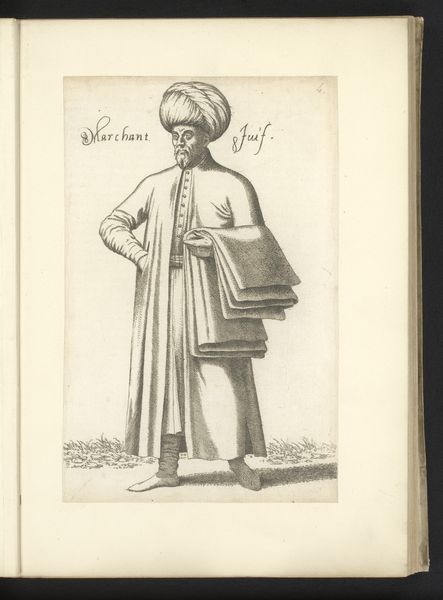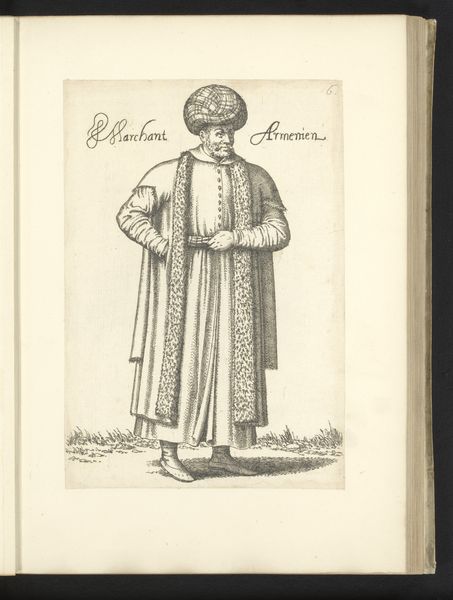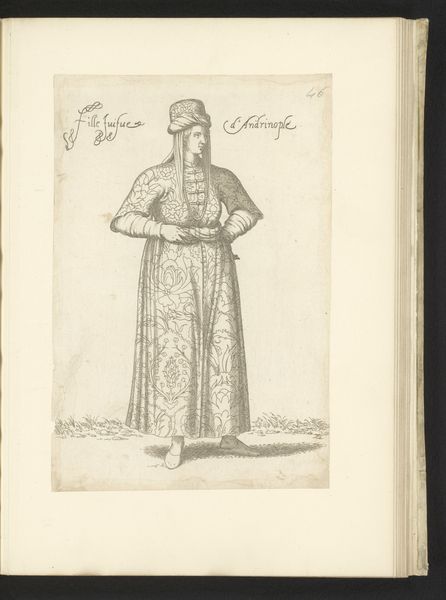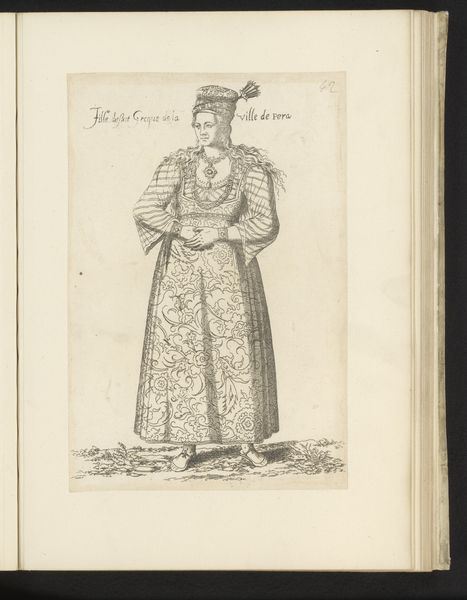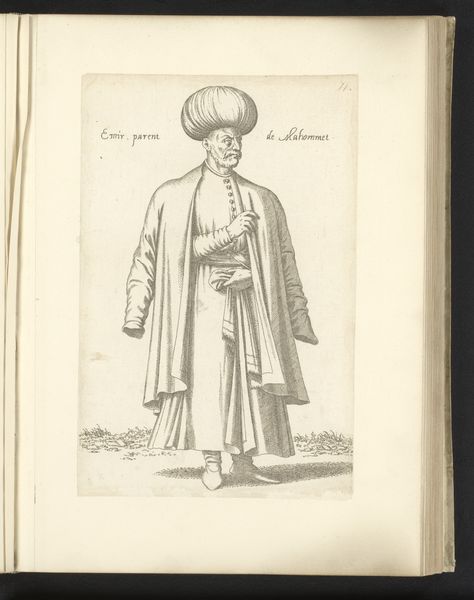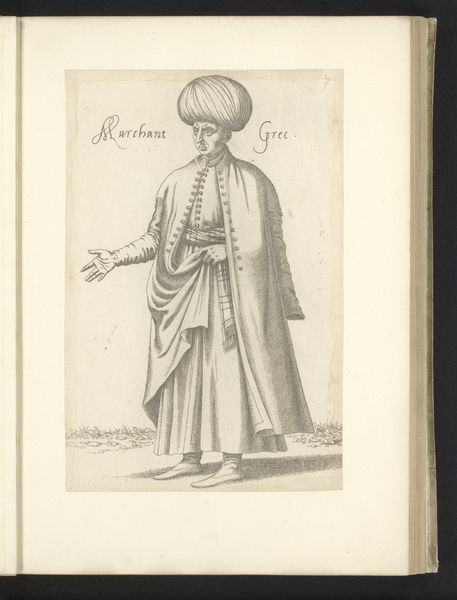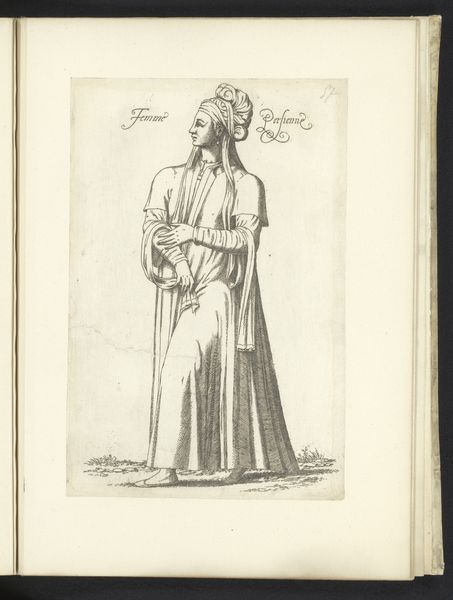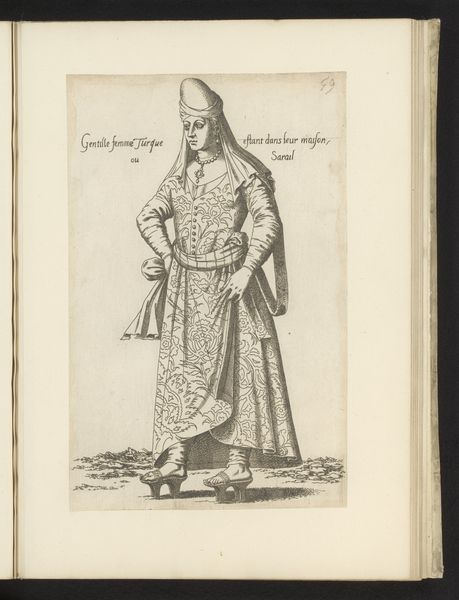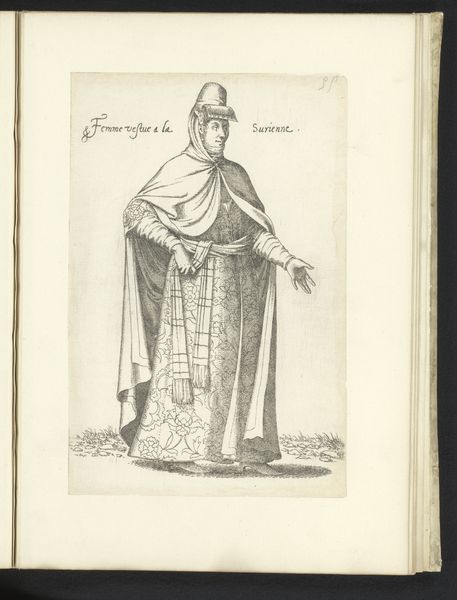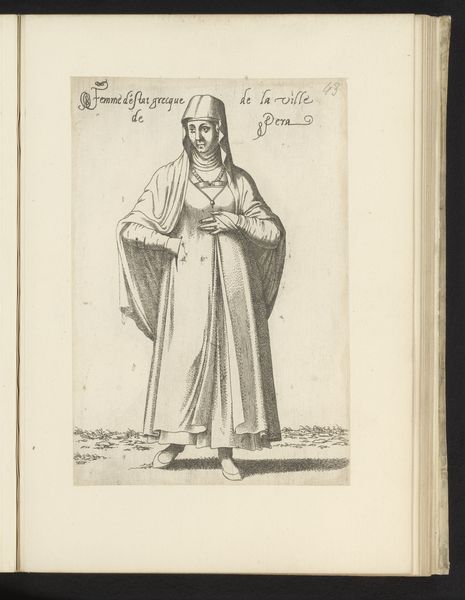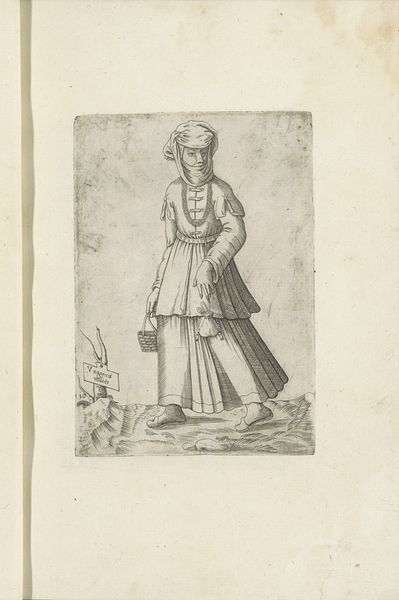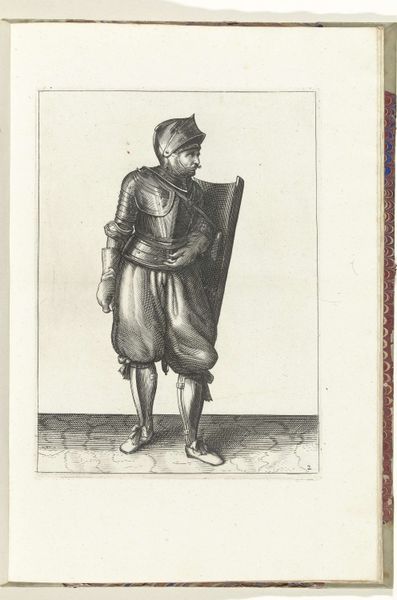
drawing, ink
#
portrait
#
drawing
#
pen drawing
#
mannerism
#
ink
Dimensions: height 267 mm, width 170 mm
Copyright: Rijks Museum: Open Domain
Curator: This compelling image, entitled "Arabische handelaar," or "Arab Merchant," is a pen and ink drawing attributed to Léon Davent, created sometime between 1555 and 1568. Editor: It's a study of texture, isn’t it? The artist rendered the striped robe so meticulously, creating an interesting contrast to the plain ground and the smooth lines of the turban. Curator: Precisely! Consider how European artists at the time perceived and depicted non-Europeans. Depictions like these are artifacts of the early modern era and how people were starting to see their own identity through global commerce and trade with the "Orient." This was at the beginning of colonialism. Editor: It feels… reserved, almost stoic. I am also curious about the intention behind presenting the merchant so neutrally, with a flat expression. Do you believe this neutrality adds or detracts from the viewer’s understanding of the subject and his culture? Curator: Well, to analyze the subject without context risks reproducing stereotypes, and one should also understand how institutions, especially in Western culture, perpetuate them. While some see only what the image renders, such an approach will ignore how power and discourse constructs representations. It reflects a moment where European identity was solidified in relation to the "other" as European nations embarked on building global empires, often with self-congratulatory claims of superior culture. Editor: Right. Seeing the power structures, it brings up many uncomfortable questions. The clothing is almost clinical in its exactness; the turban itself sits heavily on his head. It is easy for contemporary viewers to examine our role in looking as outsiders here too. How might someone from this person's background have seen themselves then? Curator: It invites us to understand the complexities of artistic and cultural exchange in the sixteenth century. But let’s remember that historical portraits also played a critical role in social construction and negotiation. It reminds us that, beyond what our eye sees, lies our individual interpretation, laden with assumptions about race, economics, class and trade that shape perceptions of others, past and present. Editor: Thank you. That gives me much to reflect on concerning visual politics and their shaping influence.
Comments
No comments
Be the first to comment and join the conversation on the ultimate creative platform.
